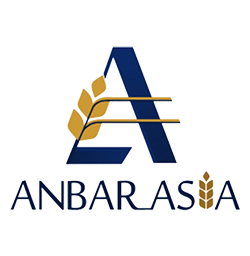The global economic landscape is marked by diverse trends, with luxury goods experiencing growth in certain markets while other sectors face challenges. The luxury furniture market is expanding in the Middle East, as exemplified by Bentley Home’s recent store openings in Saudi Arabia. Following a debut in Dubai, two new flagship locations have been established in Riyadh and Jeddah, bringing the total to five globally. These stores, situated in affluent areas, target consumers seeking high-end products. The Saudi Arabian interior design market, driven by rising disposable incomes and a preference for luxury goods, presents a lucrative opportunity for brands like Bentley, with its emphasis on craftsmanship and bespoke options. This expansion highlights a strategy of blending luxury with convenience, enhancing customer engagement.
Conversely, the home improvement sector is experiencing a downturn. Lowe’s Cos. reported a 4% decline in sales and a 22.3% drop in earnings for the first quarter of 2025, with total sales reaching $21.4 billion. This indicates a reduction in big-ticket discretionary purchases, potentially influenced by economic pressures such as inflation. Despite this, Lowe’s saw increases in online and professional sales, suggesting a shift towards e-commerce and B2B solutions. The company’s ‘Total Home’ strategy, integrating various categories including furniture, aims to offset declines in traditional retail.
Meanwhile, China’s wood-based panel market presents a complex picture. Fibreboard production capacity has decreased, with a 19% decline in the number of manufacturing enterprises, but exports have increased by 10% in volume. These exports are primarily directed towards markets like Mexico, Nigeria, and Saudi Arabia, suggesting a recovery in production capacity and price competitiveness. At the same time, fibreboard imports into China have contracted by 45% in volume and 50% in value, highlighting China’s growing self-sufficiency and impacting exporters from countries such as New Zealand and Germany.
Strategic shifts in the wood-based panel industry include exploring emerging markets, such as those within the “Belt and Road” initiative, and leveraging the Regional Comprehensive Economic Partnership (RCEP) to enhance trade across Asia. There’s also a growing need for domestic market adaptation, requiring production lines to meet local standards. In Inner Mongolia’s Hailar city, the bamboo, wood, and grass products export sector is rapidly growing, with exports reaching 125 tonnes in the first two months of the year, marking a 31% increase in volume and 40% in value. This sector, dominated by small and medium-sized enterprises, faces challenges navigating technical trade measures.
The aviation sector in Saudi Arabia shows strong performance, with Saudia reporting a 16% increase in international passenger numbers to 20 million in 2024. This rise reflects a general recovery in the Middle East aviation market, which has led global demand growth, despite geopolitical challenges. Saudia’s operational enhancements, digital transformation, and customer engagement strategies have further contributed to this growth. In the luxury real estate market, particularly in Dubai, high-value transactions, such as the $63 million sale of a villa named Allegra, indicate sustained demand for exclusive properties, emphasizing luxury design and functionality.
The UAE is also witnessing significant shifts in various sectors. High-end real estate properties are blending comfort with innovation, catering to affluent buyers. In the food and beverage industry, businesses like The Lighthouse are focusing on creating community connections through diverse and bespoke venue designs. The wellness sector is experiencing a surge in demand for alternative health solutions, such as red light therapy, driven by growing consumer awareness and skepticism towards non-validated beauty products. The market for red light therapy is projected to grow from 1.24billionin2024to1.24billionin2024to1.7 billion by 2030, with companies like BON CHARGE entering the Middle East market.
Additionally, the energy sector is also experiencing strategic moves with the establishment of NMDC Energy’s advanced fabrication yard in Saudi Arabia. This development supports the region’s energy infrastructure and aligns with Saudi Vision 2030’s economic diversification goals. These trends underscore the importance of adapting to evolving consumer behaviors, leveraging technological advancements, and strategically navigating trade dynamics in a complex and interconnected global market. For importers and exporters, understanding these market shifts is vital for optimizing supply chains and positioning products effectively.






